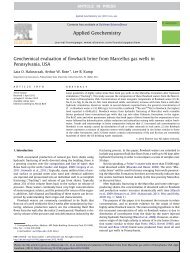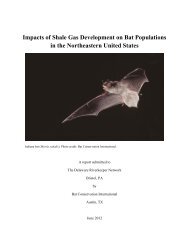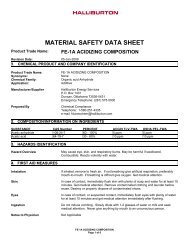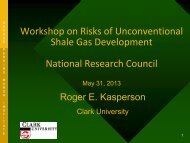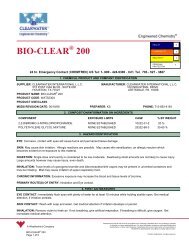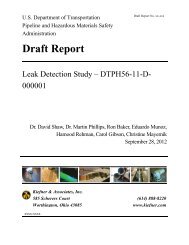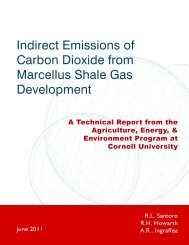Gulf Coast Coal and Petrochemical Facilities Still Not Storm Ready
Gulf Coast Coal and Petrochemical Facilities Still Not Storm Ready
Gulf Coast Coal and Petrochemical Facilities Still Not Storm Ready
You also want an ePaper? Increase the reach of your titles
YUMPU automatically turns print PDFs into web optimized ePapers that Google loves.
– 15 –<br />
ExxonMobil–Chalmette (cont.): Water pollution total, cause of pollution: The refinery’s<br />
good management of its process water st<strong>and</strong>s out. Every other refinery dumped their process<br />
water but Chalmette Refining did<br />
not. Chalmette stored their process water in tanks until it could be treated before dumping it<br />
into local waterways.<br />
There were reports of “isolated pockets of stormwater in the refinery which contained some<br />
sheen material <strong>and</strong> potential hydrocarbon 29 ” but there are no amounts given. Chalmette<br />
Refining reported wastewater discharge that was essentially storm water, but samples taken<br />
on August 29 th , 2012 indicated they had exceeded permit limits for Total Suspended Solids.<br />
There was also a release of 198.2 gallons of crude oil. This release was deemed preventable<br />
because ExxonMobil’s inspection data was inadequate. According to its own reports, the<br />
refinery should have known that it had a problem with its pipes 30 .<br />
ExxonMobil Chemical Plant <strong>and</strong> Refinery—Baton Rouge<br />
Hurricane Isaac did not seriously impact Baton Rouge, yet the complex’s storm preparation<br />
does raise questions.<br />
LDEQ issues variances before storms. These variances are just that—changes from ordinary<br />
operations in order to facilitate response to the storm. ExxonMobil requested <strong>and</strong> was granted<br />
permission to dump an additional 30 tons of sulfur dioxide 31 . However, citizens <strong>and</strong> public<br />
officials should be concerned with the reasons petrochemical companies submit variance<br />
requests, <strong>and</strong> what criteria LDEQ uses to review <strong>and</strong> approve them. Limits on pollution are<br />
intended to protect public health <strong>and</strong> the environment, <strong>and</strong> as these systems are even more<br />
vulnerable during a state of emergency, not less, it is critical that variances only be used as a<br />
last resort.<br />
ExxonMobil Chemical–Baton Rouge<br />
The chemical plant reported numerous problems from the wind, including the hatches of tanks<br />
that simply blew away.<br />
Did chemical plant shut down No. Hurricane Isaac did not seriously impact Baton Rouge.<br />
According to reports 32 , “Several floating roof tank socks were discovered missing or torn as a<br />
result of high winds. Multiple tank hatches discovered missing or open as a result of high<br />
winds.”<br />
Air pollution total, cause of pollution: 160 pounds of Hexane, 49 pounds of flammable<br />
vapor, <strong>and</strong> over 400 pounds of VOCs.<br />
ExxonMobil did report a valve vent leak but has never reported total emissions from the leak<br />
(the emissions listed above were single day estimates taken a week before the valve vent leak<br />
was fixed).<br />
Water pollution total, cause of pollution: There were approximately 11 gallons of process<br />
water leaked from a wastewater holding tank.



